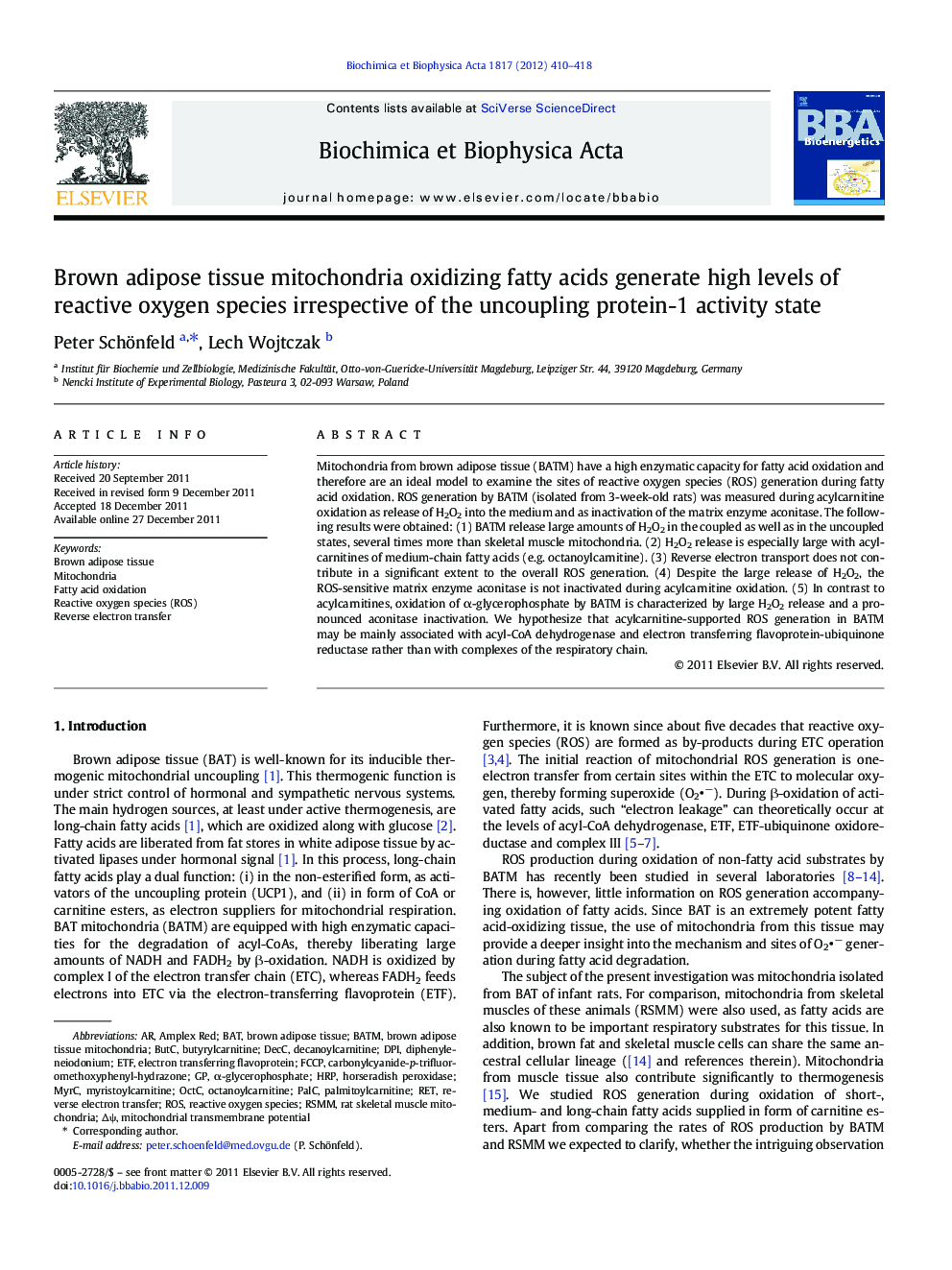| کد مقاله | کد نشریه | سال انتشار | مقاله انگلیسی | نسخه تمام متن |
|---|---|---|---|---|
| 1942475 | 1052615 | 2012 | 9 صفحه PDF | دانلود رایگان |

Mitochondria from brown adipose tissue (BATM) have a high enzymatic capacity for fatty acid oxidation and therefore are an ideal model to examine the sites of reactive oxygen species (ROS) generation during fatty acid oxidation. ROS generation by BATM (isolated from 3-week-old rats) was measured during acylcarnitine oxidation as release of H2O2 into the medium and as inactivation of the matrix enzyme aconitase. The following results were obtained: (1) BATM release large amounts of H2O2 in the coupled as well as in the uncoupled states, several times more than skeletal muscle mitochondria. (2) H2O2 release is especially large with acylcarnitines of medium-chain fatty acids (e.g. octanoylcarnitine). (3) Reverse electron transport does not contribute in a significant extent to the overall ROS generation. (4) Despite the large release of H2O2, the ROS-sensitive matrix enzyme aconitase is not inactivated during acylcarnitine oxidation. (5) In contrast to acylcarnitines, oxidation of α-glycerophosphate by BATM is characterized by large H2O2 release and a pronounced aconitase inactivation. We hypothesize that acylcarnitine-supported ROS generation in BATM may be mainly associated with acyl-CoA dehydrogenase and electron transferring flavoprotein-ubiquinone reductase rather than with complexes of the respiratory chain.
► BAT mitochondria oxidizing acylcarnitine esters generate high amounts of ROS.
► These ROS are predominantly released at the external face of the inner membrane.
► Reverse electron transport does not contribute significantly to this process.
► It may be associated with β-oxidation enzymes rather than with electron transfer chain.
Journal: Biochimica et Biophysica Acta (BBA) - Bioenergetics - Volume 1817, Issue 3, March 2012, Pages 410–418